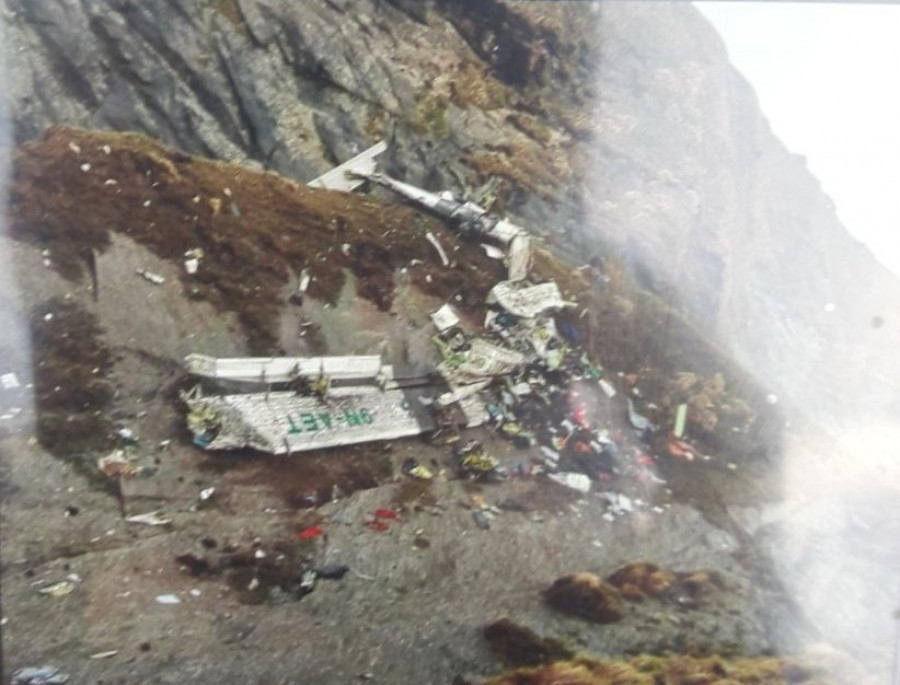Editorial
Blaming the dead
Aviation safety will remain a pipe dream unless stakeholders mend their ways.
The official investigation of the Tara Air Flight 197 crash in May last year regurgitates the list of usual suspects responsible for air accidents in Nepal: Bad weather, negligence, and machine malfunction. Investigators identified a malfunction in the plane’s terrain awareness and warning system, which led to the pilot losing situational awareness and hitting a mountain. They also point to the co-pilot’s lack of expertise of flying a challenging route like Pokhara-Jomsom, adding pressure on the main pilot. In the most recent Yeti Airlines crash in Pokhara too, involving the loss of 72 lives, pilot errors have been flagged, even though the final investigation report is yet to come out.
Now that a climatic condition, a couple of dead humans, and a machine have been blamed, there will be no one among the living to take responsibility for the series of fatal errors that led to the loss of 22 lives on board last May. There is no denying that pilot errors are a big cause of plane crashes, but putting all the blame on the pilots does injustice to the workers and humans they were, working in often unfavourable conditions. The quickest way to shun responsibility for air crashes seems to be to blame those who have left the world and cannot defend themselves against the stories built around them.
A machine does not have agency by itself; it is a servant of the humans who use it. And if it is not serviced well, it doesn't function the way it should. The failure to do regular check-ups and maintenance is also human error, which the report does not mention. Human errors can hardly be rectified without bringing to book those who failed to keep the planes in flying condition. The solution lies not in blaming the dead but in investigating each individual who was involved in the systemic malpractice of aviation safety negligence.
The Tara Air crash investigation points to a glaring flaw in Nepal's aviation safety culture. In many cases, pilots are asked to fly in inappropriate weather conditions due to pressure from the airlines. Moreover, part of the reason for the recent Yeti Airlines crash and last year’s Tara crash was failure of the two pilots in the cockpit to clearly communicate. It is the individual airline’s responsibility to ensure flawless communication and of the civil aviation regulator to regularly monitor for compliance with aviation basics.
The Civil Aviation Authority of Nepal (CAAN) only seems interested in building swanky new airports while paying little attention to aviation safety. It is high time the body was split, as it cannot simultaneously undertake the oft-conflicting regulatory and profit-making roles. The United Nations aviation watchdog ICAO has repeatedly asked Nepal to do so. The issue has been under discussion, including in the parliament, for the past decade and a half without any tangible outcome. Why is the Nepali state so blasé about such a serious issue? How many more crashes will it take for the Nepali politicians and parliamentarians to do the right thing?




 18.12°C Kathmandu
18.12°C Kathmandu














